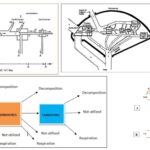IB Biology 21 Views 1 Answers
Sourav PanLv 9November 9, 2024
How does independent assortment occur due to the random orientation of homologous chromosome pairs in meiosis I?
How does independent assortment occur due to the random orientation of homologous chromosome pairs in meiosis I?
Please login to save the post
Please login to submit an answer.
Sourav PanLv 9May 15, 2025
Independent assortment occurs during Metaphase I of meiosis, where homologous chromosome pairs align randomly along the equatorial plane of the cell. This random orientation is a key factor in how genetic variation is generated in gametes.
Mechanism of Independent Assortment
- Random Orientation: During Metaphase I, homologous chromosomes (each consisting of two sister chromatids) line up in pairs at the metaphase plate. The orientation of each pair is random; for example, either the maternal or paternal chromosome can face either pole of the cell. This means that the orientation of one pair does not affect the orientation of another pair, allowing for independent assortment of different chromosomes.
- Separation During Anaphase I: When the homologous chromosomes are separated during Anaphase I, each daughter cell receives a mix of maternal and paternal chromosomes. This results in gametes that have different combinations of alleles.
Genetic Variation
- Combinatorial Possibilities: The number of possible combinations of chromosomes that can result from independent assortment is given by 2n2n, where nn is the number of homologous chromosome pairs. For humans, with 23 pairs, this results in over 8 million possible combinations just from independent assortment alone.
- Contribution to Diversity: Independent assortment, combined with crossing over (which occurs earlier in Prophase I), significantly increases genetic diversity among offspring. Each gamete produced can carry different combinations of alleles, contributing to the variation seen in populations.
0
0 likes
- Share on Facebook
- Share on Twitter
- Share on LinkedIn
0 found this helpful out of 0 votes
Helpful: 0%
Helpful: 0%
Was this page helpful?




